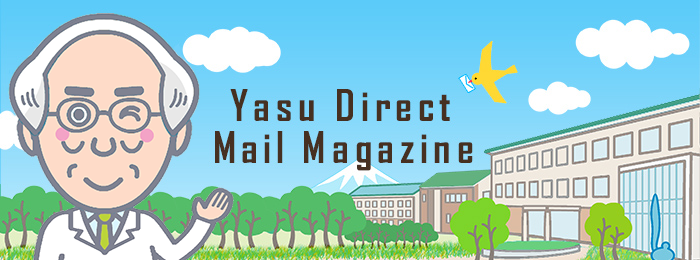No. 6 (August 7, 2015)


Yasu Direct Mail Magazine No. 6 (August 7, 2015)
Even though the rainy season has ended, there are still many humid days. I am sure you are all making devoted efforts towards your studies and research despite the heat and humidity.
This summer has been a hot, enthusiastic one for the university administration as well. The reason is because July 22 was the deadline for submitting documents for university reform concepts in the third Mid-term Target Period (the Ministry of Education, Culture, Sports, Science and Technology refers to this as "functional strengthening" and requires it of all national universities), which will span six years from the next fiscal year, and the budget application incorporating these concepts (called "gaisan-yohkyu"in Japanese; the budgetary allocations from the next fiscal year are determined based on the results of this review).
University-wide discussions have been conducted to this end since the previous fiscal year, but last-minute discussions and adjustments were required for the creation of a specific plan. During that period, I started by presenting idealistic, general principle-based, fundamental directions. Explanations were given to Chairs of Department and other persons through visits to all the parent institutes, discussions took place at the Committee of University Management and each Faculty Meeting, and discussions were held with the Executive Directors in charge of education at four Inter-University Research Institute Corporations (IURIC) and one research institute of JAXA (ISAS), called Senior Partners. Based on informal talks with each President of IURIC and Director-General of ISAS, discussions took place at the Education and Research Council and the Administrative Council, as well as fervent, intensive discussions over a long period of time (roughly one month) between the President and Executive Directors of SOKENDAI. In this way, we were finally able to give concrete form to realistic, specific concepts and plans, as well as the budget requests for each of these. The Administration Board determined the final plan, which was created via final deliberations at the Administrative Council, on July 21-the day before the deadline.
As a result, we put together a vision for "SOKENDAI's Functional Strengthening Concepts for the third Mid-term Target Period" entitled, "A Graduate School that Cultivates New Fields and Develops Creative Researchers Based on Cutting-edge Research Environments" . It is made up of three strategies and five initiatives, all of which have strong ties with faculty members and students alike. I am sure these will bring many benefits. In particular, I feel that Initiative 1 (Creating a Custom-made, Advanced, and Specialized Education System) underneath Strategy I (Connecting With Parent Institutes to Develop the Creative, International Researchers Required by the Era Based on Cutting-edge Research Environments) has the strongest connections with students. To that end, we will enhance our school-wide, comprehensive education and educational programs that span multiple fields. In addition, we will introduce a school-wide system for students who want to participate in internships at other universities or institutions, introduce custom-made research guidance, and cultivate creative researchers.
These concepts were formed in agreement between the President and Executive Directors based on the views of the Deans of School. They incorporate the strong feelings and passion of the President and Executive Directors, as well as calm judgments by and the enthusiasm of the Deans. Therefore, I would like to introduce the members of SOKENDAI's administration (since there are many administrators who are unfamiliar to students).
There are currently six Deans (Note 1): Michihiro Kojima, Dean of the School of Cultural and Social Studies; Yukio Nakamura, Dean of the School of Physical Sciences; Takashi Kamiyama, Dean of the School of High Energy Accelerator Science; Nobuhisa Kashiwagi, Dean of the School of Multidisciplinary Sciences; Mitsuyasu Hasebe, Dean of the School of Life Science; and Kentaro Arikawa, Dean of the School of Advanced Sciences. These Deans have shared their views (as representatives of the faculty members and students in their Departments) on this matter when it was presented at the monthly Committees of University Management since November of last year. I am sure that these Deans will play leading roles in implementing individual "functional strengthening" initiatives in order to accomplish the third Mid-term Target. I hope the students will expect great things of them and also provide cooperation to that end.
There are three Executive Directors: Mariko Hasegawa (Vice President, education and administration), Kuniaki Nagayama (research, social cooperation, and financial affairs), and Katsumi Tamura (evaluation and international cooperation). These Executive Directors have many years of experience at parent institutes and departments (Note 2) in different fields. They serve an important role by skillfully adapting the visions of the President-which tend to highlight ideals and general principles-to a realistic viewpoint. I am confident that the Executive Directors will work hard in the future to implement each "functional strengthening" project they are in charge of together with the Deans and department faculty. I hope the students will expect great things of them as well.
We have formulated these "functional strengthening" concepts based on a joint awareness that we must undertake university reform based on requests from the era and society, as well as a sense of crisis that SOKENDAI must be changed. I am very thankful for the strong support from all realms and great efforts of the Presidents of IURIC, Director-General of ISAS, and Chairs of Department during that time. We may experience many difficulties in order to implement these concepts, but I believe we must somehow accomplish them. I intend to move forward with strong feelings regarding science and a sense of purpose that says reciprocation must be provided because great research at SOKENDAI has been accomplished together with its graduate students. This energy is obtained from continuing science (only on weekends and holidays), and I hope to share this feeling with everyone.
Finally, SOKENDAI's "functional strengthening" concepts will be truly achieved when our faculty and students accomplish even more excellent results, and when these results are positively evaluated. Therefore, I kindly ask for your understanding and assistance. If you have any questions or comments, please feel free to share them with me any time. Until the next issue!
Note 1) The Deans are affiliated with the following departments: Kojima with the Department of Japanese History, Nakamura with the Department of Fusion Science, Kamiyama with the Department of Materials Structure Science, Kashiwagi with the Department of Statistical Science, Hasebe with the Department of Basic Biology, and Arikawa with the Department of Evolutionary Studies of Biosystems.
Note 2) The Executive Directors are from the following departments: Hasegawa from the Department of Evolutionary Studies of Biosystems, Nagayama from the Department of Physiological Sciences, and Tamura from the Department of Regional Studies.
